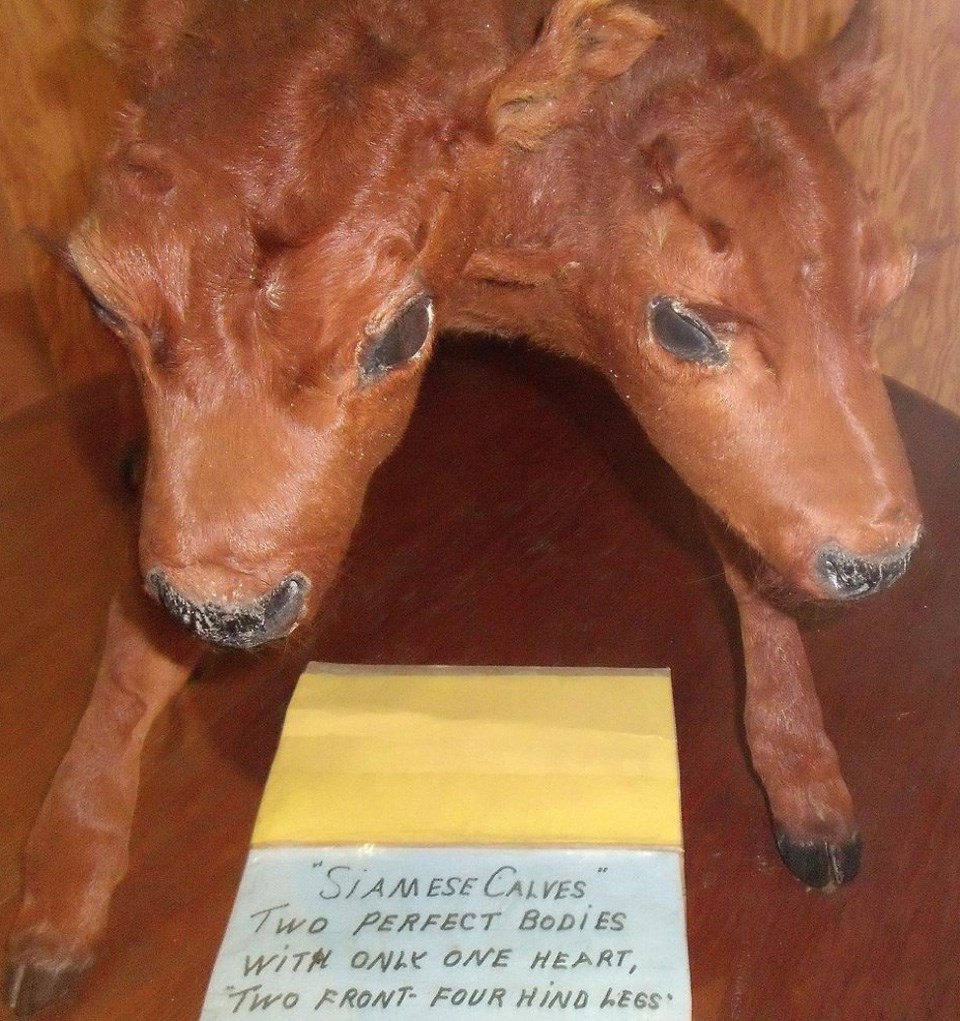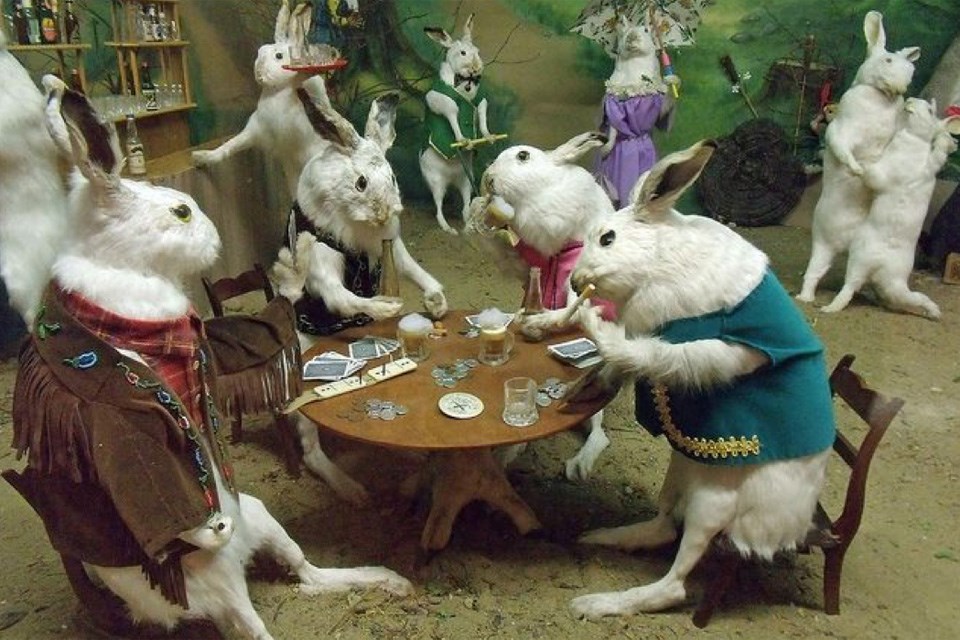Is this the largest collection of its kind as claimed? That has not been verified but there is no denying the prolific nature of the beast…er…beasts? Carefully crafted by taxidermist Nicholas Fuchs and donated to the Lloydminster Culture and Science Centre in 1965, the collection includes nearly 1,000 items.
While some of the animals in the exhibit are educational, showcasing natural poses in simulated natural environments, others are designed to delight – like the table of rabbits engaged in high stakes poker game! Another item, the Siamese calves is as sweet as it is rare. Could this entry in the exhibit be the inspiration behind the ? One can only guess.
Whether you find the exhibit charming or alarming, there is no denying it is a time honoured practice and an art form. This craft, rooted in ancient history, has evolved significantly over the centuries. Initially practiced by early Egyptians to preserve animals for the afterlife, taxidermy gained prominence in the 19th century, particularly during the Victorian era, when it became a popular method for creating lifelike representations of animals.

Modern taxidermy employs a range of sophisticated techniques to achieve realistic and enduring results. These methods include careful skinning, meticulous mounting, and the use of advanced materials to recreate the natural appearance of animals. The process demands a high level of skill, precision, and creativity, as taxidermists must have an in-depth understanding of anatomy, sculpture, and painting to faithfully capture the essence of the animal.
The cultural significance of taxidermy is profound. It plays a crucial role in wildlife preservation by immortalizing species that may be endangered or extinct, allowing future generations to appreciate and learn about biodiversity. Museums and educational institutions rely on taxidermy art to create engaging and informative exhibits, providing the public with a tangible connection to wildlife and natural history.
The skill, creativity, and attention to detail required to master this craft makes taxidermy truly special. So, the next time you are in Lloydminster, stop by this intriguing attraction. It’s a unique way to experience wildlife close up, and to enjoy some whimsy along the way.
Nerissa McNaughton is a freelance writer and a contributor to Great West Media. This story was written for the Great West Media & Southern Alberta 51°µÍřpapers Hot Summer Guide advertising feature. The Hot Summer Guide is a special feature about summer activities, bucket list adventures, staycation options, road trips, attractions, events, and road trip-worthy food & beverage destinations across Alberta. It is not written by and does not necessarily reflect the views of the editorial staff.




